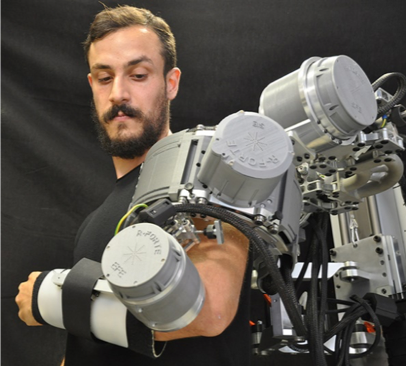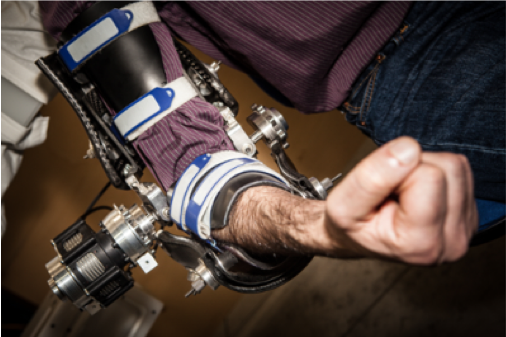31.07.2020 At the Wearable Robotics Lab of Scuola Superiore Sant’Anna (SSSA) and IUVO, we are exploring new ideas for novel exoskeletons for upper-limb rehabilitation to support the continuum-of-care rehabilitation concept of the ReHyb project. By virtue of the strong know-how acquired in the last decade in the design of wearable exoskeletons for rehabilitation and assistance scenarios, SSSA and IUVO teams will conceive and develop novel exoskeletons for both the in-clinic treatment of patients with limited-to-null residual movement capability and requiring a robotic intervention capable to mobilize shoulder and elbow joints, and chronic assistance of patients with higher residual mobility and requiring assistance to the grasp function.
Exoskeletons will be conceived starting from existing devices developed both in previous Italian and EU research projects and will benefit from the strong synergy SSSA and IUVO will establish with three REHYB partners, namely TECNALIA (for integration of modules for functional electrical stimulation), IBEC (for integration of AR/VR tools) and TUM (for integration of advanced models for the estimate of patients’ biomechanics parameters). The final target is to provide patients with a rehabilitation program tailored on their specific residual functional capabilities, while -at the same time- being able to monitor patients’ progress from the early recovery in clinic to daily-life assistance at home.

